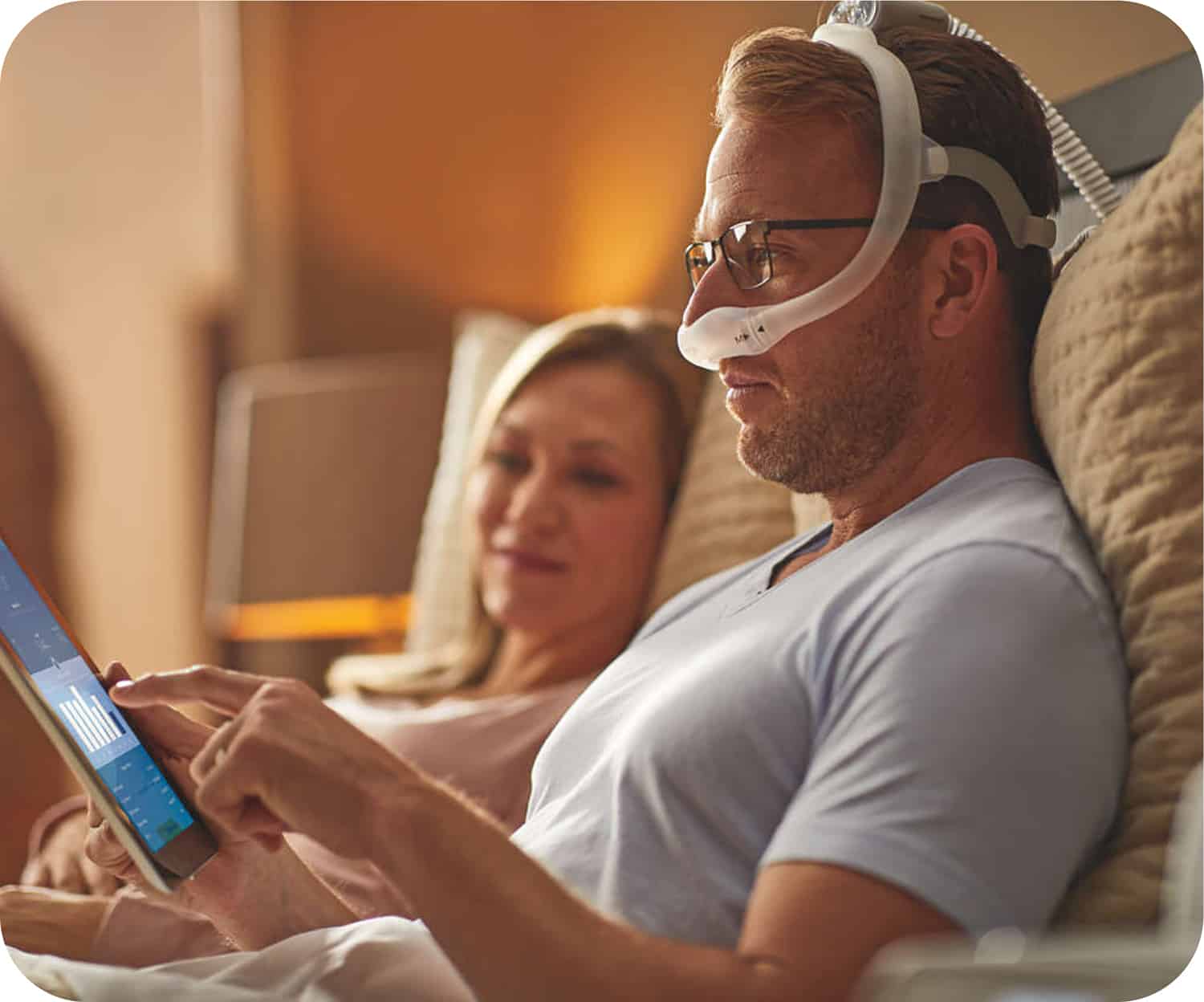If you suspect that you may suffer from Obstructive Sleep Apnea Syndrome, you should go to your referring doctor to refer you to a specialist and perform a sleep study.
Once you have a diagnosis of positive Obstructive Sleep Apnea Syndrome, you should be treated.
Your doctor will tell you which therapeutic option is right for you based on the results of the sleep study.
What should you know before you start?
Most people who perform a positive airway pressure treatment agree that it takes time to adjust. But they also claim it’s worth it.
Here are some points to help you get on track with treatment, even before you start using the equipment.

Finding the ideal mask
Choosing the right mask for you is essential. A wrong choice of mask can lead you not to adapt to the treatment.
Discover the masks we offer at Cpap Therapy below by type of breathing, treatment needs, lifestyle and other options.

Equipment installation
The treatment system consists of a mask, a tube, the treatment equipment and the humidifier.
Knowing what to do (and what not to do) when installing equipment can make all the difference throughout your treatment. We offer you some tips on the installation of equipment for the treatment of sleep apnea.
See installation of equipment How is the equipment installed? The treatment system consists of a mask, a tube, the treatment device and the humidifier.




